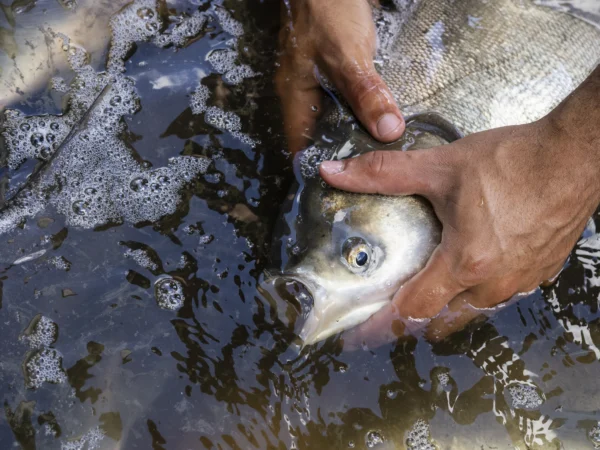
Wayne Brusate started a commercial diving company in the two-car garage of his home in Marysville, Michigan.
Ten years later, his business was contracted to maintain all the water intake systems at Detroit Edison’s power generating facilities in southeastern Michigan. Power generating plants require a massive volume of water to operate, Brusate said.
Brusate used the Monroe power plant as an example. He said the plant draws in 1 million gallons of water every minute from Lake Erie and the Raison River. Each gallon of water travels along an intake canal and through a series of screens designed to stop floating debris such as leaves and plastic bags.
After the water clears the “trash racks,” it flows into holding bays before passing and cooling the plant’s 3000-watt generators and boilers. It takes longer to describe the water’s journey through the plant than the actual process takes.
“In less than two minutes, the water is through the system and back in the river,” Brusate said.
But within two years of their arrival, invasive zebra mussels began causing problems at power plants around the Great Lakes.
“The fire suppression system failed first,” Brusate said, referring to the Monroe plant’s internal sprinkler and firehose supply lines.
The fire suppression system draws water straight from Lake Erie. If larval zebra mussels get sucked in, they settle in the pipes and within months they begin to clog the lines.
The solution for these smaller, infrequently used systems was chlorine, according to Brusate. Chlorine kills zebra mussels. Small tubes carrying chlorine were installed near the opening of the system intake pipe. The water was treated as it entered, larval mussels were killed, problem solved.
Unfortunately, that solution could not be applied to the whole plant. Even if they could chlorinate millions of gallons of water every minute, they could not dump millions of gallons of chlorinated water back into the river every minute, Brusate said.
At least, not without creating a whole new set of environmental problems. So a new zebra mussel research fund was established to help find solutions.
“First came the scientists,” he said. One researcher suggested sound could be used to discourage the zebra mussels from adhering. A large transmitter was hung inside the plant’s holding bays, but the noise it produced proved more detrimental to divers’ ears than to zebra mussels and the massive size of the plants made implementing acoustic barriers unrealistic. Each scientific hypothesis proved impractical or ineffective, frequently both, Brusate added soberly.
The entrepreneurs came next. Their ideas included a Teflon-based paint, heralded as too slick for zebra mussels. It wasn’t. Another suggestion was to spray the walls with paint mixed with jalapeno peppers.
“Jalapeno air is bad,” Brusate said with the seriousness of one whose lungs had been burned by vaporized peppers before.
In the intervening time, Brusate continued to improve and refine the manual maintenance methods his divers used. At the peak of the zebra mussel invasion in the mid-1990s, Brusate’s crew was removing hundreds of tons of zebra mussels each year — just from the Monroe power plant.
“That’s a lot of biomass,” he said. Brusate turned to gravel pit operators and pig farmers for ideas on how to move large quantities of wet, slimy gunk. He found the pig farmer’s advice to use mud-separators particularly helpful.
Today, using mud separators, hydraulic wall scrubbers and industrial augers, the commercial divers can complete in a few days a job that used to take them two weeks.
Watch the divers blasting zebra mussels on the Great Lakes Now’s segment here:
API key not valid. Please pass a valid API key.



